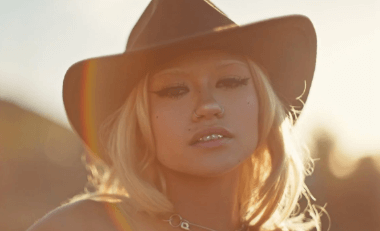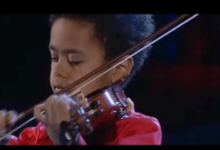
Snow Wife Age: What Is the Age of Snow’S Wife?
The Snow Wife Age: What Is the Age of Snow’S Wife?, often romanticized in various adaptations as Snow’s wife, raises intriguing questions about character development and societal perceptions. While the original Brothers Grimm tale presents her as a mere seven years old, contemporary interpretations often age her significantly, reflecting evolving norms around maturity and relationships. This shift not only alters her narrative but also invites a closer examination of the roles assigned to her and her prince. What do these changes reveal about our cultural values, and how do they impact the essence of her story?
The Origin of Snow Wife Age: What Is the Age of Snow’S Wife?
In the rich tapestry of European folklore, one often encounters tales that transcend time and culture, with “Snow Wife Age: What Is the Age of Snow’S Wife?” standing out as a poignant example.
Its fairy tale origins can be traced back to various ancient narratives, reflecting societal values and human experiences.
Read More Your Future Ex Wife: A Tale of a Marriage Heading Toward Divorce
Snow White’s history reveals themes of jealousy, innocence, and resilience, resonating deeply with audiences who seek liberation from societal constraints.
Understanding Fairy Tale Ages
Fairy tales, such as “Snow Wife Age: What Is the Age of Snow’S Wife?,” often serve as mirrors reflecting the societal norms and values of their time, yet they also possess a timeless quality that allows them to resonate across generations.
Understanding fairy tale timelines reveals how character maturity can differ significantly from real-world expectations, challenging notions of age and growth while inviting audiences to explore deeper emotional and psychological themes within these narratives.

Snow White’s Age Explained
Although interpretations of Snow White’s age vary across adaptations, the original tale by the Brothers Grimm suggests that she is merely seven years old when her story begins.
This youthful age invites considerations of character development within the realm of magical realism, revealing profound themes of innocence and growth.
- Themes of innocence and vulnerability
- The impact of external forces
- Transformation through adversity
- The juxtaposition of childhood and maturity
The Prince’s Role and Age
Exploring the role of the prince in Snow White’s narrative reveals a complex interplay of romantic idealism and societal expectations.
The prince’s characteristics, such as bravery and kindness, symbolize hope and redemption. However, his royal responsibilities extend beyond mere romance, reflecting the weight of leadership and moral duty.
His age, often overlooked, underscores a maturity that aligns with these expectations, enriching the story’s depth.
Read More Young Ex Wife Shirt: The Trendy Fashion Item That’s Taking Over Divorce Stories
The Concept of ‘Wife’ in Fairy Tales
The portrayal of the ‘wife’ in fairy tales often reflects societal norms and expectations surrounding femininity and marital roles.
These narratives shape our understanding of character maturity and fairy tale relationships, revealing:
- Idealized femininity
- Submissive roles
- Dependency on male counterparts
- Transformation through love
Such representations invite critical examination of how they influence perceptions of women’s autonomy and empowerment in contemporary society.
Cultural Interpretations of Age
Cultural interpretations of age significantly shape societal perceptions and expectations regarding individuals at different life stages.
The cultural significance of age symbolism often reflects historical context, influencing gender roles and societal norms.
Age expectations inform narrative structure and character development, impacting how stories portray relationships and personal growth.
Understanding these interpretations allows for a more empathetic view of the diverse experiences across the lifespan.
Age Discrepancies in Adaptations
Age discrepancies in adaptations of the “Snow Wife Age: What Is the Age of Snow’S Wife?” narrative reveal significant contrasts between literary sources and their animated portrayals, often reflecting broader cultural interpretations of age.
These variations not only influence character dynamics but also shape audience perceptions of maturity and desirability within the story.
Understanding these differences invites a critical examination of how age is represented and its implications in both artistic expression and societal norms.
Animated Adaptations Age Differences
Animated adaptations of classic tales often introduce intriguing age discrepancies among characters, reflecting both creative liberties and cultural interpretations.
These variations in animated character ages can significantly influence narratives and audience perceptions:
- Snow White’s youthful portrayal vs. the original tale’s ambiguity
- Cinderella’s maturity in modern interpretations
- The prince’s age in different adaptations
- The evolving depiction of villainous characters
Such contrasts enrich fairy tale adaptations, inviting deeper exploration.
Literary Source vs. Film
When examining the age discrepancies between literary sources and their film adaptations, one can observe how these differences shape character dynamics and thematic interpretations.
The age of Snow’s wife significantly influences her character development, altering her motivations and relationships.
Such changes carry narrative significance, inviting audiences to reflect on the implications of age in storytelling, freedom, and identity within diverse interpretations of the tale.

Cultural Interpretations of Age
Numerous adaptations of the Snow Wife narrative reflect varying cultural interpretations of age, which profoundly impact how audiences perceive character motivations and moral lessons.
- Age symbolism often denotes wisdom or innocence.
- Cultural perceptions shape the relationship dynamics.
- Interpretations can influence gender roles.
- The portrayal of age may highlight societal values.
These elements reveal how adaptations resonate differently across cultures, enriching the narrative’s complexity.
The Impact of Age on Storytelling
Aging gracefully, storytellers often find that their life experiences significantly enrich their narratives, imbuing them with depth and authenticity. Age influences character development and shapes audience perception, allowing for more relatable and nuanced storytelling.
Read More eonmi Park Ex Husband: What Happened in Their Marriage
| Age Group | Impact on Storytelling |
|---|---|
| Young Adults | Fresh perspectives, idealism |
| Middle-Aged | Complexity, realism |
| Seniors | Wisdom, nostalgia |
| All Ages | Diverse viewpoints, inclusivity |
Conclusion
The Snow Wife Age: What Is the Age of Snow’S Wife?, a narrative element often overlooked, serves as a lens through which societal values and character development can be examined. With adaptations varying significantly, the evolution of Snow’s age symbolizes the tension between innocence and maturity, reflecting broader cultural shifts. The notion of her as a wife introduces complex dynamics of relationships within fairy tales. Ultimately, the age of Snow White is not merely a detail; it is a towering testament to the enduring power of storytelling across generations.






